Andriod Programming Tutorials Easy to Follow Trainuing Style
Summary: This Android app development tutorial is not just for aspiring Android Developers but also for tech entrepreneurs looking to build a next-gen mobile app. Learn the basic concepts and core essentials of Android app development ranging from Android UI, Broadcast Receivers, Content Providers, and more.
So you want to learn Android app development? While it may seem daunting to become one of the 5.9 million people who provide Android app development services, the demand for Android software development continues to grow as many organizations around the world face an IT skills shortage.
So, how hard is it to program an Android app? In this Android app development tutorial, we'll learn about Android app development basic concepts and best practices on how to develop an Android app from scratch.
How to Develop Android Apps
With an idea for an android mobile app in mind, the next step is development. There are three main approaches to develop an Android app, each with various pros and cons.
1. Android app builders
Using Android app builders (no-code drag and drop app creation) can get an idea into the Google Play store quickly. But it often leads to sub-par results.
2. Learning Android app development
If you are looking to make an Android app solo, or are looking for information on how to develop Android apps to become a competitive software developer, The time it takes to learn how to program Android apps can hold you back an idea from developing it quickly and with best practices.
3. Hiring expert support
In a competitive marketplace, getting an app created quickly can mean the difference between standing out and failure. Sometimes the best option for how to program Android apps is to hire out: either an agency that provides web app development services (team of expert developers and UX designers or a freelancer (solo developer). A team often comes with greater expertise and flexibility, not to mention reliability, to meet business goals.
We respect your privacy. Your information is safe. If you are looking to make an Android app solo, or are looking for information on how to develop Android apps to become a competitive software developer, this guide is the right place to start. What is the best way to learn Android app development? The first step in this Android app development tutorial is learning how to code for Android mobile apps. Although there are many Android app language choices, the two official languages are Kotlin and Java. Kotlin recently became Google's official programming language and is the easier of the two languages to learn. However, Java is more multi-purpose and offers a wider range of capabilities to a new software developer. There are many fantastic resources available to learn how to code for either Kotlin or Java, including: The next step in the Android mobile app development tutorial is to become familiar with Android Studio, the official Integrated Development Environment (IDE) for Android. Although it is possible to develop in other environments than the Android Studio, this approach is not recommended for new developers or new Android developers. Bundled with the Android Studio is the Android SDK (software development kit), the collection of software development tools, libraries, scripts, and documentation to develop for Android, as well as the Android Emulator, for software testing applications across a variety of devices and API levels. Android Studio supports many programming languages outside Java and Kotlin, including C++, and provides the tools needed to build, refactor, test, and compile apps for publishing in the Google Play Store. The Android Studio features a very user-friendly layout editor to drag and drop UI components, preview layouts across various screen types, and helpful templates for common designs and components. While an Android app can be developed entirely from scratch, the availability of quality pre-build components and templates speeds up development and helps reduce the number of bugs in the final product. The Android Studio website has a very helpful overview of the features and tools available and how they work. The Android Studio can be downloaded free for Windows, macOS, and Linux-based devices. Once all the tools have been installed, it is time to start a new project! Android Studio makes the process easy, breaking down each decision into simple steps. The first step is to decide on the template to begin the project where "Activity" refers to the screen of the app. A "No Activity" app begins with only a file structure, an "Empty Activity" begins only with a white screen, a "Basic Activity" app begins with a starting screen and basic navigation elements already in the code, and so on. After deciding on the activity and defining layouts for each screen, the next step is naming (both external and internal names) and then choosing the language for development and the minimum SDK – basically, the lowest version of Android the app will support, since not all users will be on the latest version of Android. Google Play requires that new apps and app updates target Android 10 (API level 29) or higher. If you are creating an Android app as a learning tool, decisions around language and minimum SDK are not very important, but if you are creating an app for mainstream consumption via the Google Play Store, more thorough research should go into the product development process. Without the help of experts in design and user experience (UX) / user interface (UI), an app can look and feel unprofessional. To avoid this, defer to best practice guides or to Material Design for Android, a design system and support library created by Google. Although apps created following Material Design libraries will have a recognizable look and feel, the Material Design system can help ensure a consistent user experience across devices. The use of Material Design can limit the flexibility to customize branding or offer an innovative experience, so it is only an appropriate choice when used by small brands or solo developers. Larger brands should consider hiring UX designers to create, test, and implement a more customized solution. Ideally, both design and development are iterative processes, to seek and integrate feedback to ensure the app is meeting business goals. Android Studio can do a lot of work to get the project off the ground, providing reusable components and templates, but the next steps involve writing code (Koltin or Java primarily) for all of the app's custom components. As the diagram below notes, development (coding) is followed by a process of building/running the app on real or virtual devices and testing the app to provide a feedback loop that can help improve the app before it is ready to publish: How hard is it to program an Android app? As demonstrated above, the complexity of the project begins with its scope: easier projects can take advantage of the many templates and components readily available in the Android Studio, but every customization, feature, or unique experience adds complexity and time to the project. The Android Studio can assist in developing code faster, with reusable components and templates, as well as productivity tools such as code completion, refactoring, and testing. To develop an Android app efficiently and effectively, follow these practical tips: The key to effective learning is to first master the Android app development basic concepts. Create apps that have no purpose other than to test functions and features until you're well-versed with the concept. There are many sample projects online to help refine skills. It is easy to launch the Android emulator from within the Android Studio to test the app on an emulated device as if it were a real device. Regular testing across multiple virtual devices can account for different screen sizes, versions of Android, and usability of components. For a new programmer practicing 2-4 hours a day, expect at least 6 months to become fluent in a new language (Java or Kotlin) and at least another 3-9 months to develop a new app. Depending on the level of experience as a developer, the first app(s) created may not do what was intended. It may not even perform as expected. Keep at it! With more studying of various Android mobile app tutorials and more practice, you'll get there. The average app takes anywhere from 3 to 9 months to develop for experienced developers. Its not possible to build great Android apps overnight – and even the greatest apps need continuous attention to remain fresh. Technology and design trends change quickly, so stay on top of the latest trends in Android on various blogs, news sites, and podcasts or the official Android development blog. This year's big theme is privacy & security – do you know how to keep your app compliant and secure? We hope you found this Android mobile app tutorial useful. If you have any feedback or stories to share, leave them in the comments section below. Kotlin, Java, and C++ are primarily used in Android app development. Out of these, over 60% of Android developers are use Kotlin as it boosts productivity and ensures code safety. By default, Android doesn't support native Python Development. But you can use Python for Android development. There are tools using which you can convert Python apps into Android Packages. Once converted into these packages, you can easily run Python apps on your Android devices. Ideally, aspiring Android Developers should start with Kotlin. However, I would recommend you learn Java first if: The majority of Android apps are written in Java and Kotlin. In some cases, programming languages like C, C++, and Basic are also used. Google offers the native development kit (NDK) that uses native languages like C and C++ for Android development. But you can't build an entire Android app with C or C++. You need to learn Java.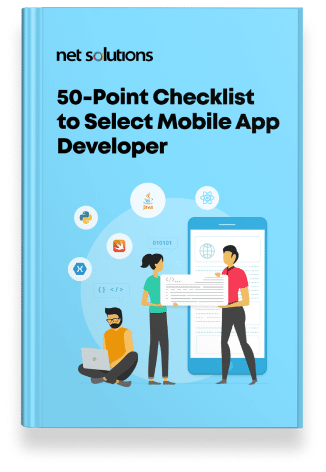
Android App Development Tutorial: 3 Steps to Success
Step 1: Learn to Code for Android
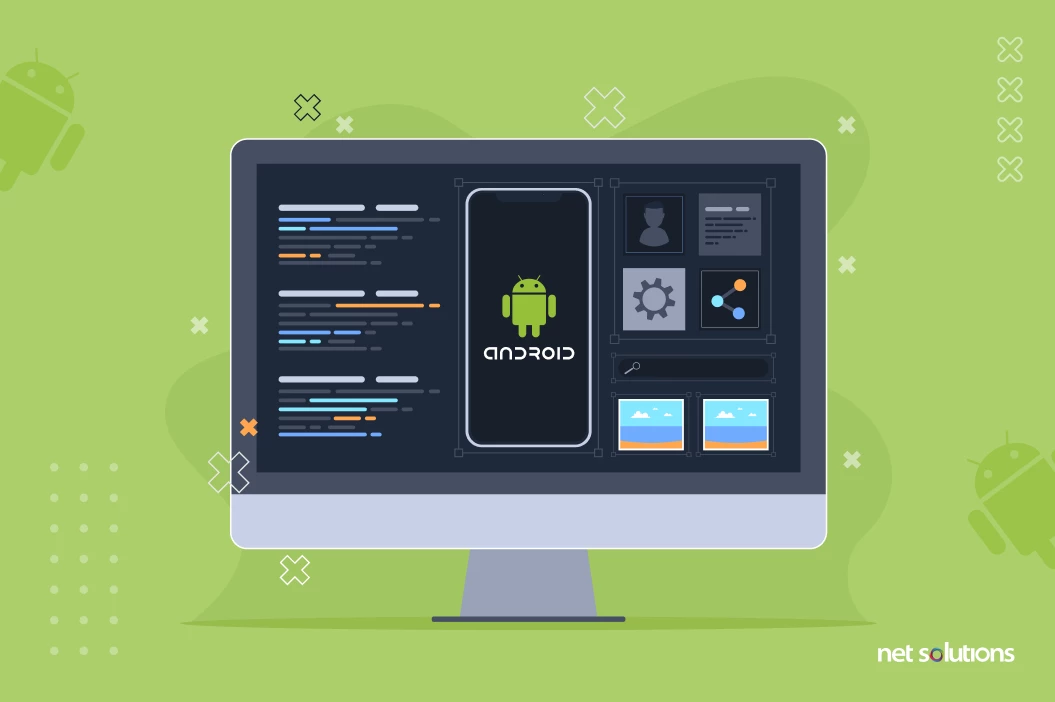
Step 2: Download the Android Studio & Android SDK
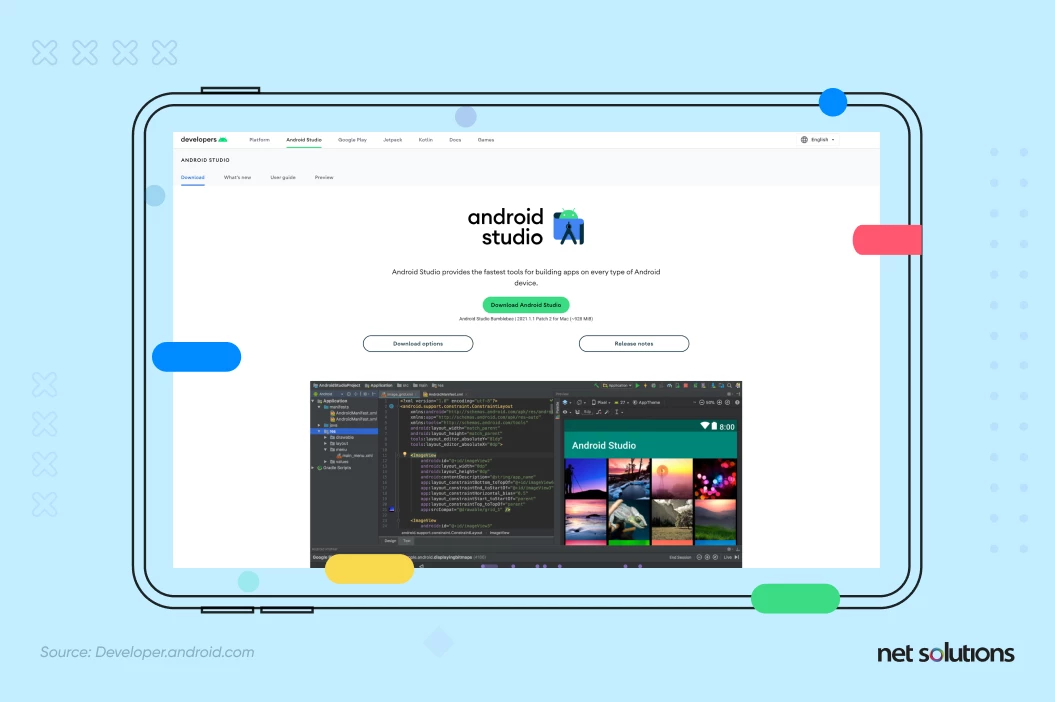
Step 3: Start a New Project
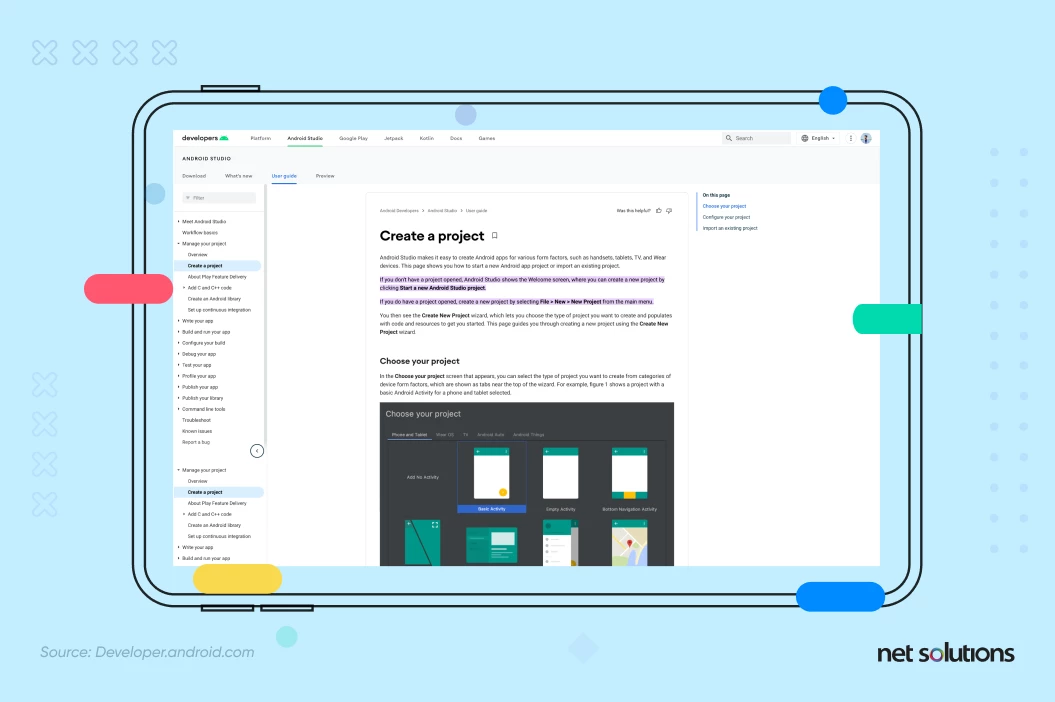
Step 4: Design the App
Step 5: The Development Process
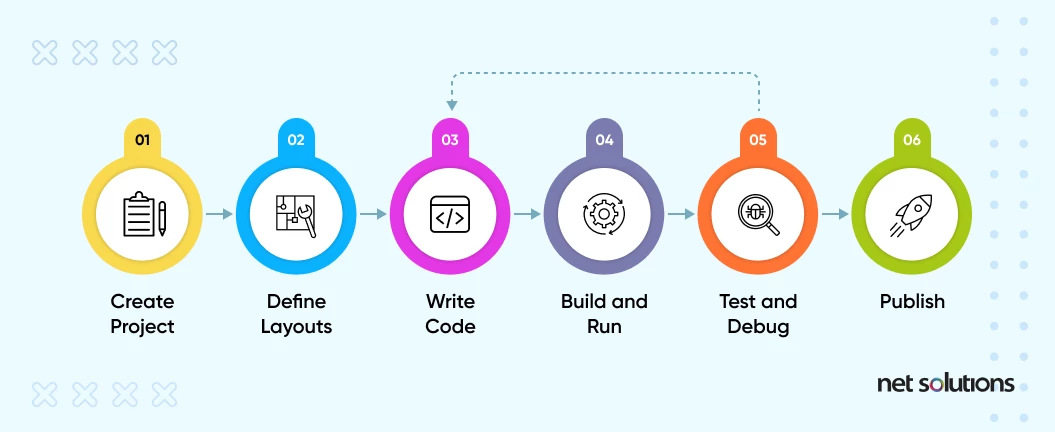
How to Develop an Android App Efficiently
1. Start Small
2. Always Test
3. Learn at the right pace
4. Be Patient
5. Keep Learning
Frequently Asked Questions
1. What languages are used for Android app development?
2. Is Python Used for Android App Development?
3. Which Should I lean first as an Android App Developer – Kotlin or Java?
4. What language are Android apps written in?
5. Can I make Android Apps in the C language?
Source: https://www.netsolutions.com/insights/android-app-development-tutorial-learn-basic-concepts/